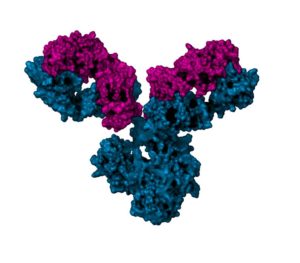One of the first tasks necessary for recombinant production of a protein or mAb is synthesis of cDNA(s) that will encode the protein of interest. This is typically done by reverse translation of the amino acid sequence of the desired protein into a DNA sequence, followed by chemical synthesis of that sequence. It is widely appreciated that amino acids are encoded by multiple (synonymous) codons, and algorithms are often employed to optimize codons for efficient translation. Our attention has focused recently on the role of synonymous, rare codons during translation. Not all codons are used with the same frequency. Synonymous codons that occur rarely are considered to be suboptimal for gene expression because they are translated more slowly than common codons. Yet surprisingly, many protein coding sequences include large clusters of synonymous rare codons. For example, rare codons at the 5′ terminus of coding sequences have been shown to increase translational efficiency.
In a recent article in PLOS Computational Biology, Julie Chaney and colleagues at the University of Notre Dame in South Bend, IN, suggest that synonymous codon usage is directed and not happenstance. They demonstrate that many rare codon cluster positions are conserved within homologous coding sequences across diverse species, suggesting that rare codons result from positive selection and have a functional role. Most conserved rare codon clusters occur within, rather than between, conserved protein domains, challenging the view that their primary function is to facilitate co-translational folding after synthesis of an autonomous structural unit. Instead, since conserved rare codon clusters separate smaller protein structural motifs within structural domains and these smaller motifs typically fold faster than an entire domain, it suggests that synonymous rare codons may act to regulate the rate of protein synthesis during the earliest steps of protein folding, while synthesis is still underway. This realization may change some of the assumptions on which codon optimization algorithms are based, and could lead to improvements to enhance protein expression in mammalian cells.
The article is entitled, “Widespread position-specific conservation of synonymous rare codons within coding sequences” [PLOS Computation Biology 2017, May 5; 13(5):e1005531. doi: 10.1371/journal.pcbi.100553].
Chamow & Associates provides CMC services to help biotechnology companies to prepare biotherapeutics for clinical testing.





